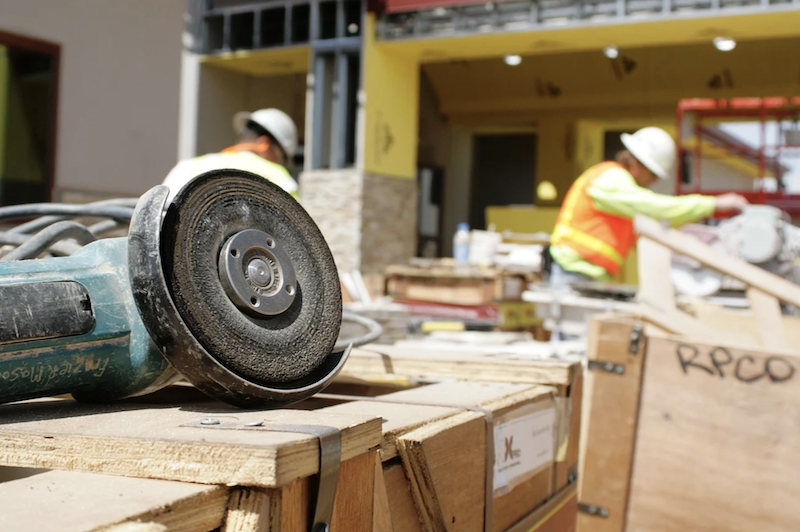The construction industry added 11,000 jobs between June and July but nonresidential construction employment remains far below pre-pandemic levels, according to an analysis by the Associated General Contractors of America of government data released today. Association officials said nonresidential construction has been affected by declining demand for projects, particularly for public infrastructure work, and urged Congress to quickly pass the new bipartisan infrastructure measure.
“Contractors are plagued by soaring materials costs, long or uncertain delivery times, and hesitancy by project owners to commit to construction,” said Ken Simonson, the association’s chief economist. “Recovery has been especially slow in infrastructure construction.”
Construction employment in July totaled 7,421,000, a gain of 11,000 from June, following three months of job losses. However, the rebound was limited to residential and specialty trade contractors, while nonresidential building and infrastructure construction firms continued to shed workers.
Residential building contractors such as homebuilders added 8,300 employees in July, while employment was unchanged among residential specialty trade contractors. The two residential segments have added a total of 58,500 employees, or 2.0%, to their workforce since February 2020.
In contrast, nonresidential building contractors shed 2,500 employees in July. Employment declined by 2,100 among heavy and civil engineering construction firms—the segment most involved with infrastructure. Nonresidential specialty trade contractors added 7,500 employees in the month. Following the huge loss of jobs between February and April 2020 at the beginning of the pandemic, infrastructure contractors have added back only 37% of lost jobs. Nonresidential building and specialty trade contractors have each regained about 60% of lost workers, while the total nonfarm payroll economy has recouped 75% of workers.
Simonson observed that an unprecedented number of materials are experiencing extreme price increases and long lead times for production or delivery to project sites. These problems mean fewer construction workers are being employed and some owners are delaying project starts, adding to the drag on industry employment. The economist noted that the association has just updated its Construction Inflation Alert, a guide to inform owners, officials, and others about the cost and supply-chain challenges.
Association officials noted the new infrastructure measure boosts federal investments in a wide range of infrastructure projects, which will help generate new demand in the nonresidential sector. They added the bill appears likely to pass in the Senate but that some members of the House want to delay action on the bipartisan measure until passing an unrelated, partisan, spending bill.
“The last thing Washington should be doing is holding up a much-needed, bipartisan infrastructure bill while commercial contractors struggle to add jobs,” said Stephen E. Sandherr, the association’s chief executive officer.
Related Stories
Market Data | May 2, 2023
Nonresidential construction spending up 0.7% in March 2023 versus previous month
National nonresidential construction spending increased by 0.7% in March, according to an Associated Builders and Contractors analysis of data published today by the U.S. Census Bureau. On a seasonally adjusted annualized basis, nonresidential spending totaled $997.1 billion for the month.
Hotel Facilities | May 2, 2023
U.S. hotel construction up 9% in the first quarter of 2023, led by Marriott and Hilton
In the latest United States Construction Pipeline Trend Report from Lodging Econometrics (LE), analysts report that construction pipeline projects in the U.S. continue to increase, standing at 5,545 projects/658,207 rooms at the close of Q1 2023. Up 9% by both projects and rooms year-over-year (YOY); project totals at Q1 ‘23 are just 338 projects, or 5.7%, behind the all-time high of 5,883 projects recorded in Q2 2008.
Market Data | May 1, 2023
AEC firm proposal activity rebounds in the first quarter of 2023: PSMJ report
Proposal activity for architecture, engineering and construction (A/E/C) firms increased significantly in the 1st Quarter of 2023, according to PSMJ’s Quarterly Market Forecast (QMF) survey. The predictive measure of the industry’s health rebounded to a net plus/minus index (NPMI) of 32.8 in the first three months of the year.
Industry Research | Apr 25, 2023
The commercial real estate sector shouldn’t panic (yet) about recent bank failures
A new Cushman & Wakefield report depicts a “well capitalized” banking industry that is responding assertively to isolated weaknesses, but is also tightening its lending.
Architects | Apr 21, 2023
Architecture billings improve slightly in March
Architecture firms reported a modest increase in March billings. This positive news was tempered by a slight decrease in new design contracts according to a new report released today from The American Institute of Architects (AIA). March was the first time since last September in which billings improved.
Contractors | Apr 19, 2023
Rising labor, material prices cost subcontractors $97 billion in unplanned expenses
Subcontractors continue to bear the brunt of rising input costs for materials and labor, according to a survey of nearly 900 commercial construction professionals.
Data Centers | Apr 14, 2023
JLL's data center outlook: Cloud computing, AI driving exponential growth for data center industry
According to JLL’s new Global Data Center Outlook, the mass adoption of cloud computing and artificial intelligence (AI) is driving exponential growth for the data center industry, with hyperscale and edge computing leading investor demand.
Healthcare Facilities | Apr 13, 2023
Healthcare construction costs for 2023
Data from Gordian breaks down the average cost per square foot for a three-story hospital across 10 U.S. cities.
Higher Education | Apr 13, 2023
Higher education construction costs for 2023
Fresh data from Gordian breaks down the average cost per square foot for a two-story college classroom building across 10 U.S. cities.
Market Data | Apr 13, 2023
Construction input prices down year-over-year for first time since August 2020
Construction input prices increased 0.2% in March, according to an Associated Builders and Contractors analysis of U.S. Bureau of Labor Statistics Producer Price Index data released today. Nonresidential construction input prices rose 0.4% for the month.

















